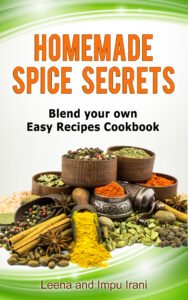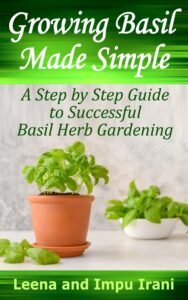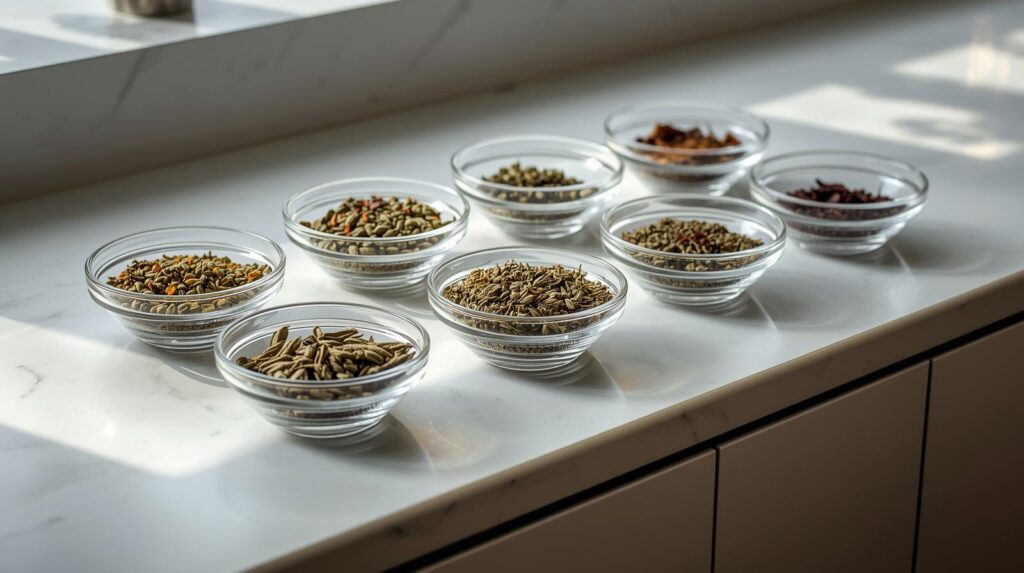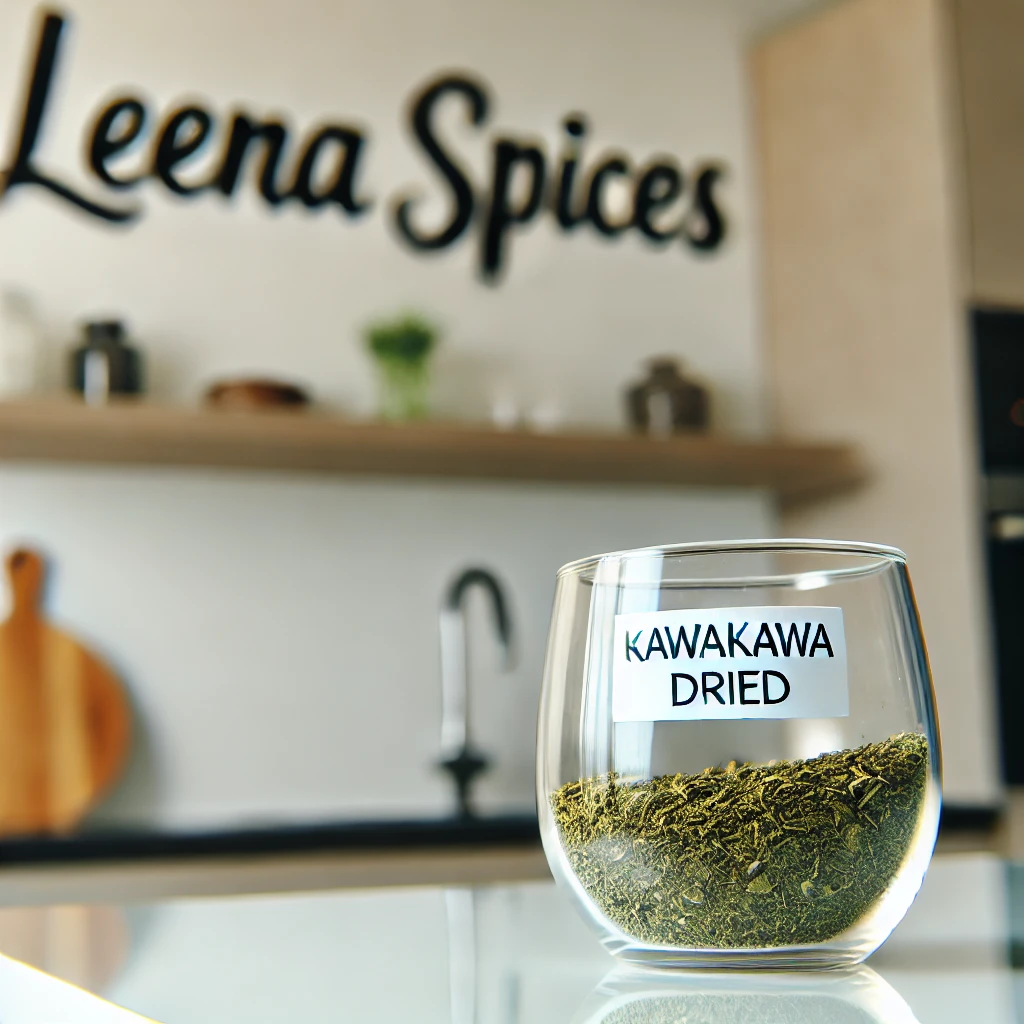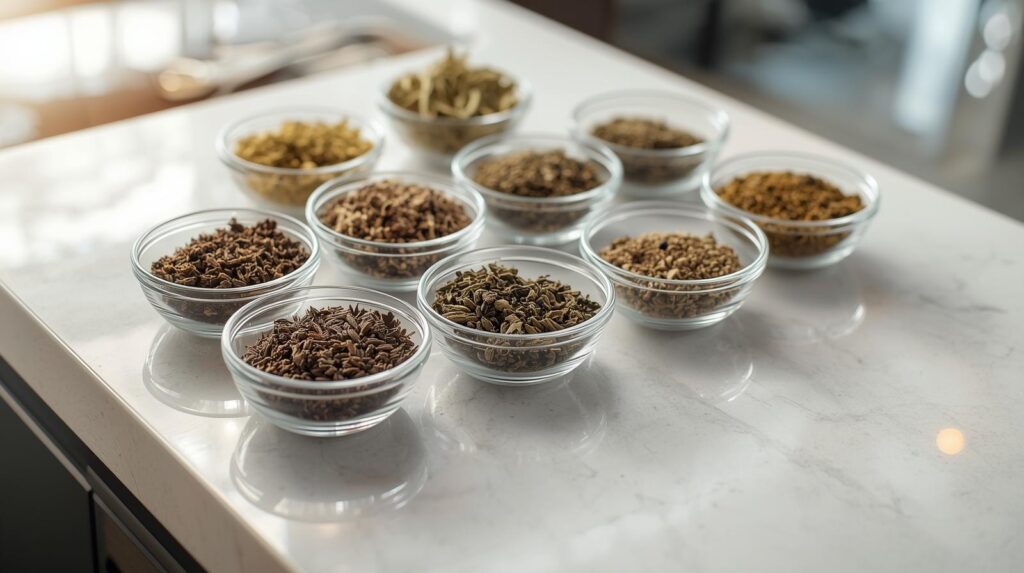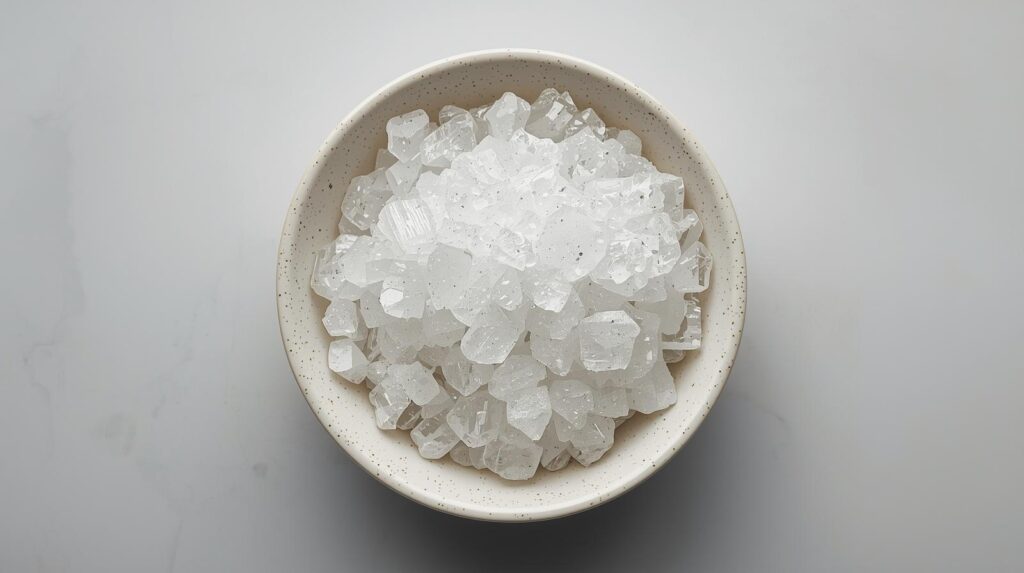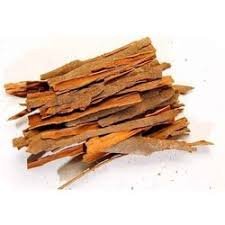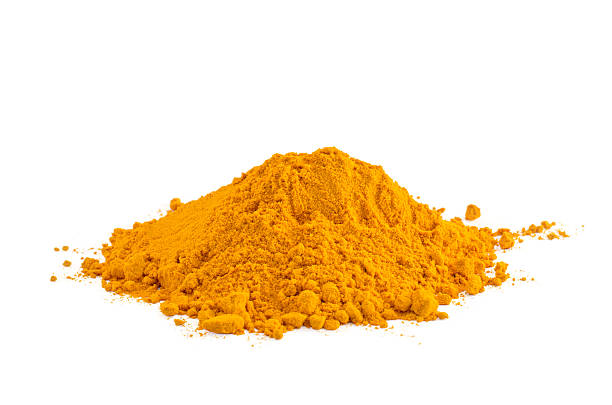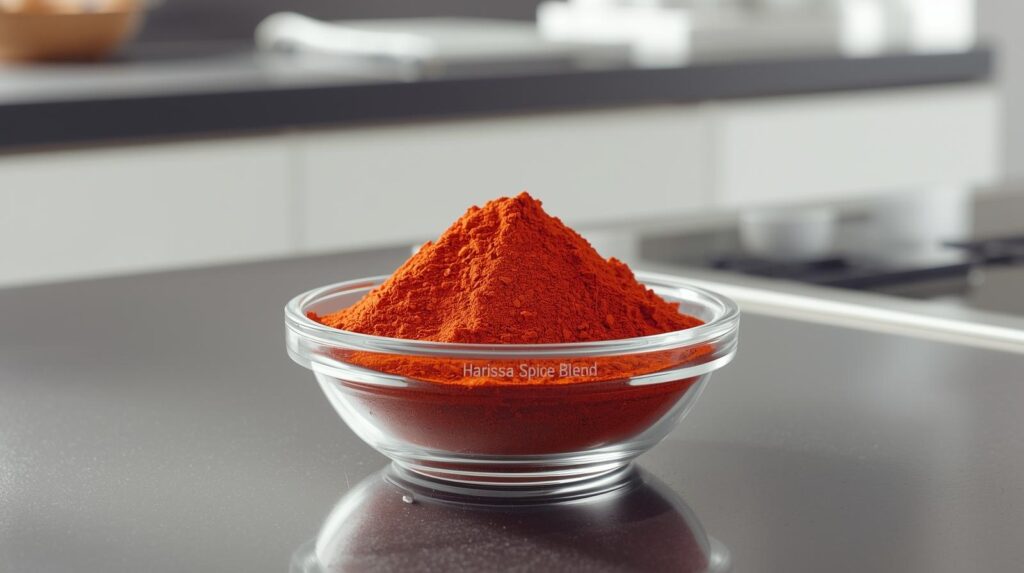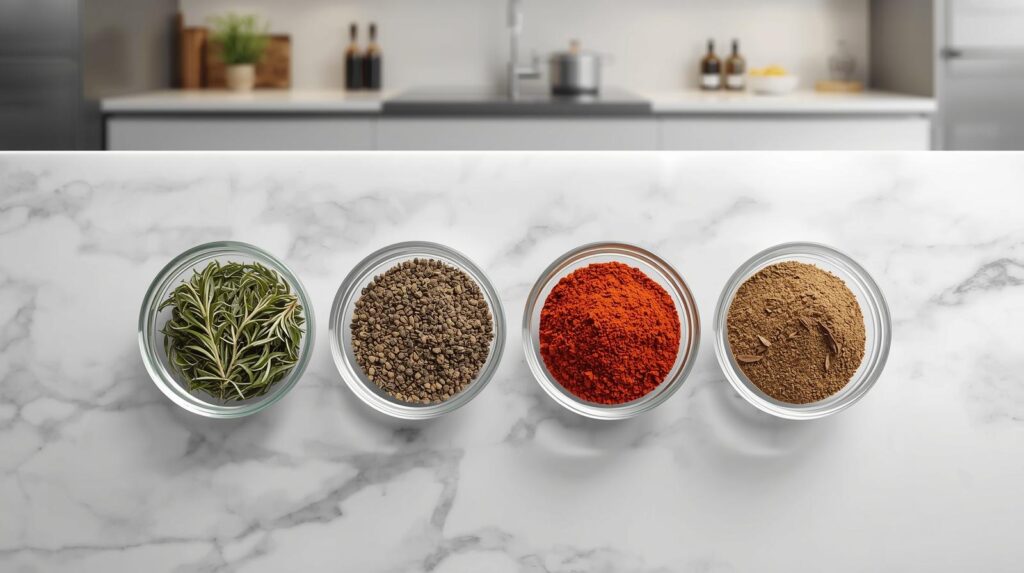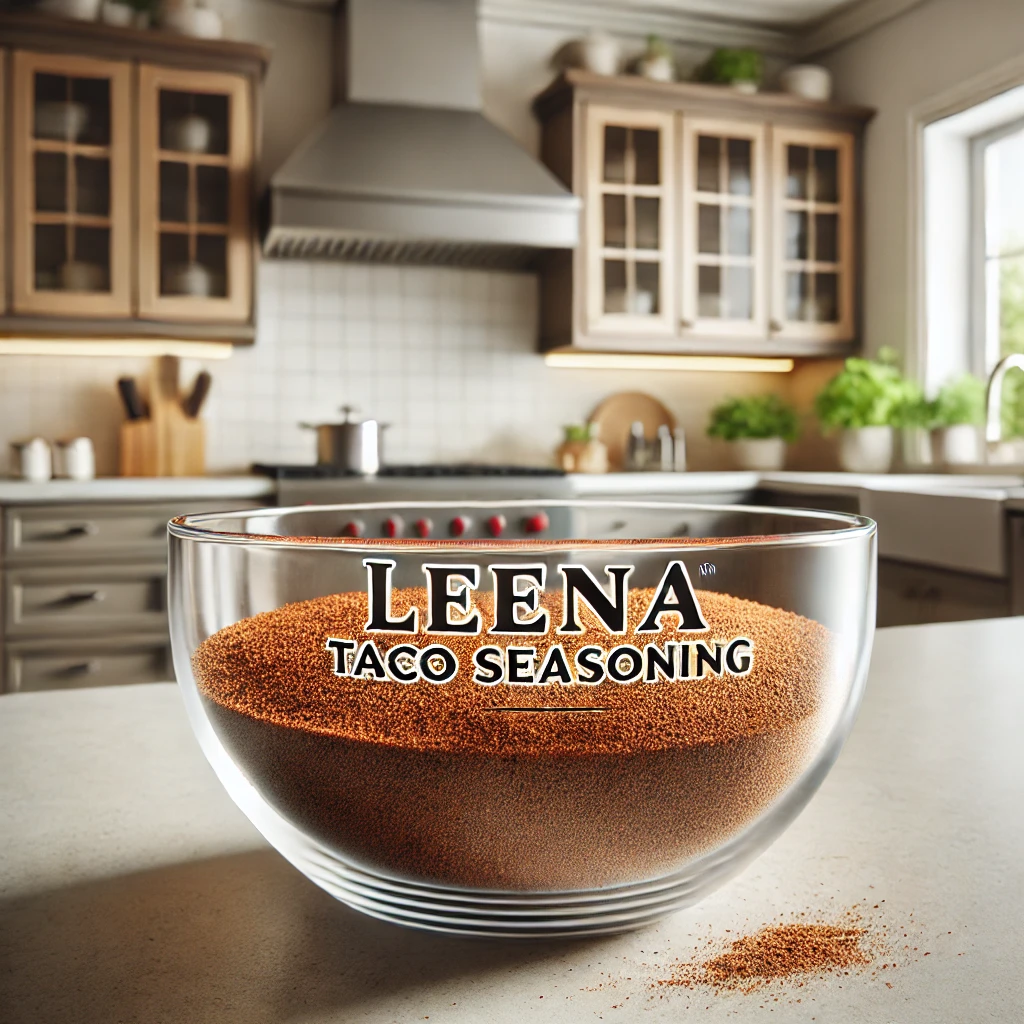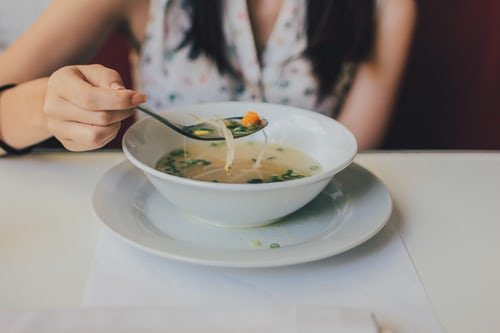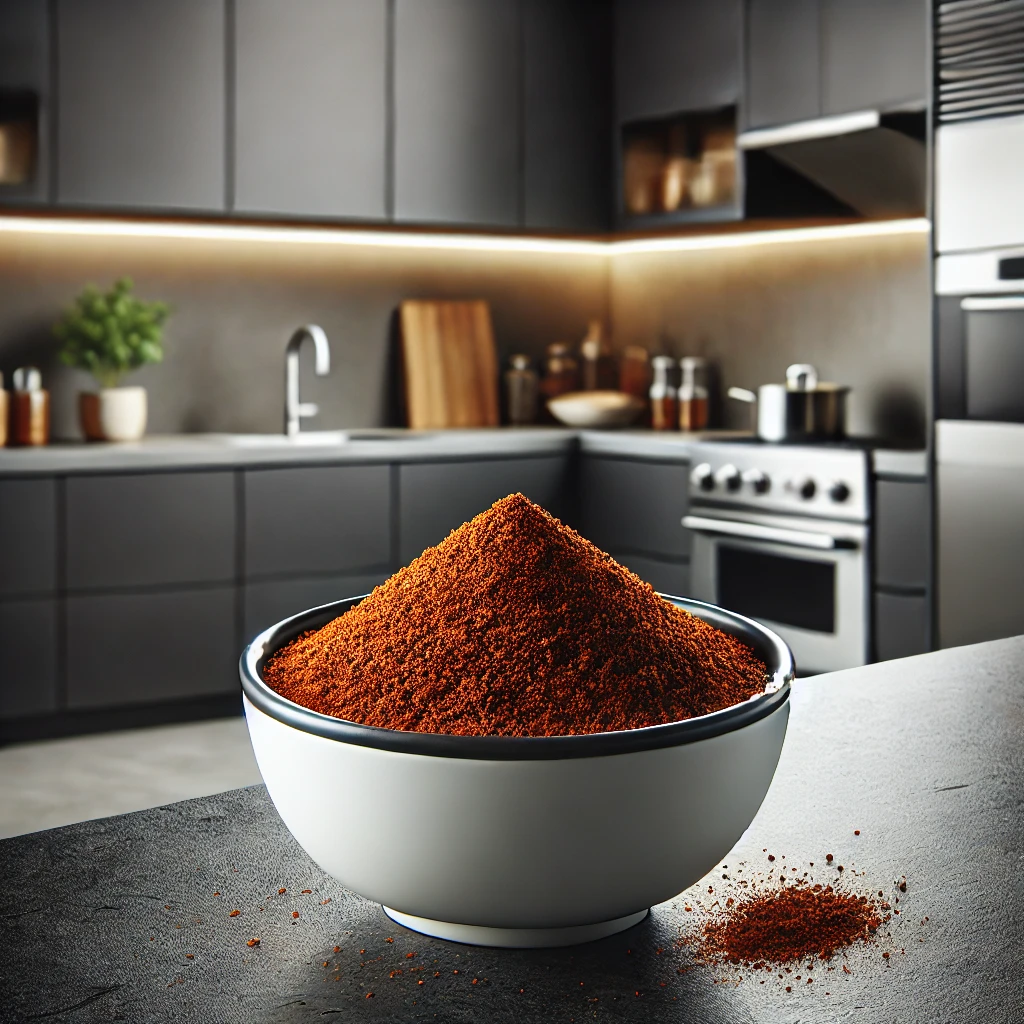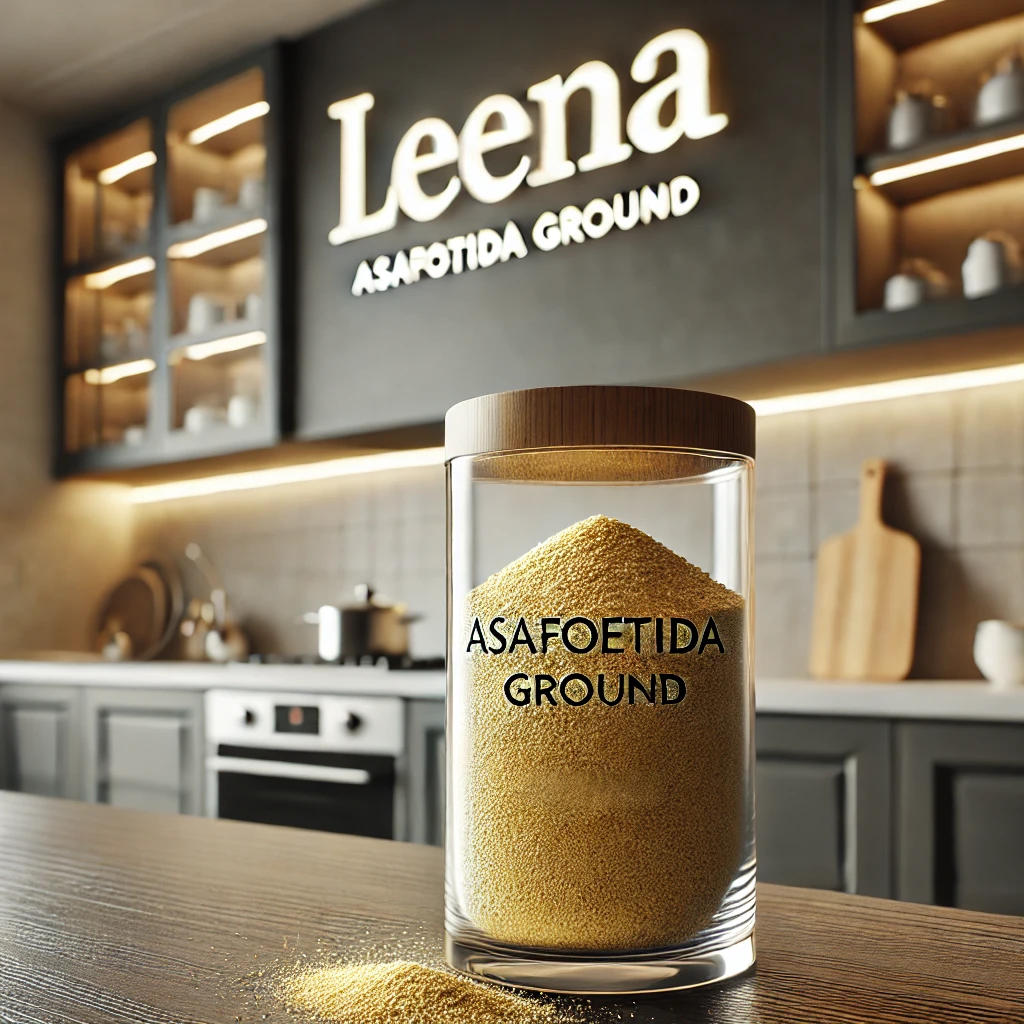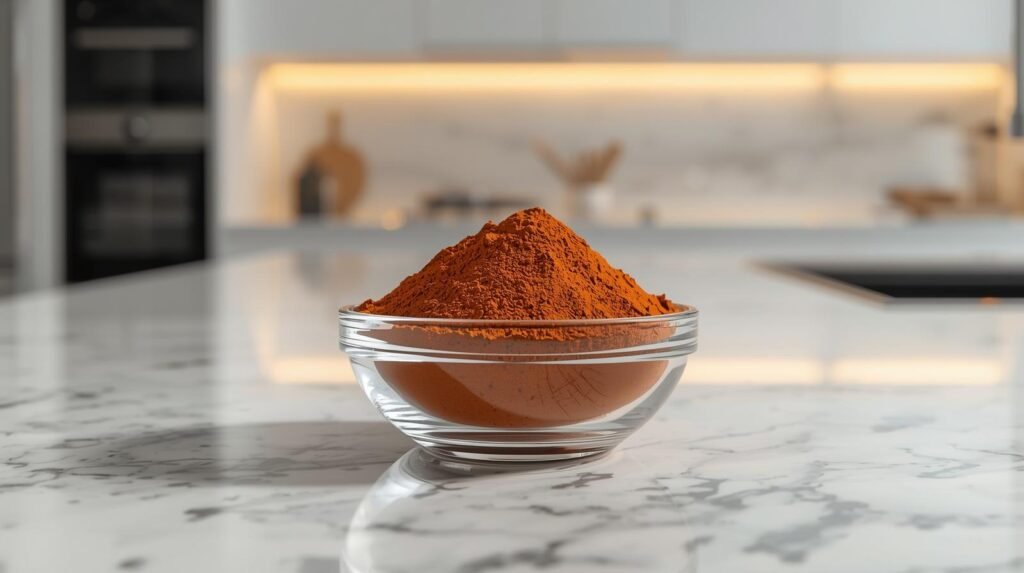How to Cook Delicious Mouthwatering Lamb Jalfrezi at Home: 7 Easy Tips for Perfect Flavor
Table of Contents
- Key Takeaways
- How do you make lamb jalfrezi at home?
- What Spices Are Used in Traditional Lamb Jalfrezi?
- What Is Lamb Jalfrezi and What Makes It Different From Other Curries?
- What Does “Jalfrezi” Mean in a Curry Context?
- What is the origin and history of Lamb Jalfrezi?
- Which Cut of Lamb Is Best for Making Jalfrezi Curry?
- What Sides Pair Well with Lamb Jalfrezi?
- How Long Does It Take to Cook Lamb Jalfrezi to Make the Meat Tender?
- Can I substitute mutton for lamb in jalfrezi if it’s cheaper from local farms?
- How do I make lamb jalfrezi using leftover roast lamb from a BBQ?
- Frequently Asked Questions (FAQs)
- Conclusion
Key Takeaways: Lamb Jalfrezi
What is Lamb Jalfrezi?
A spicy Indian curry with tender lamb, stir-fried vegetables, and a thick, semi-dry tomato-based sauce. “Jalfrezi” means spicy stir-fry.
What makes it different from other curries?
Quick stir-fry cooking, chunky vegetables with crunch, and a bold, hot flavor from fresh chilies and spices.
Which cuts of lamb are best?
Shoulder or leg (boneless, cubed); neck fillet works too.
Can I use mutton instead of lamb?
Yes, but it needs longer cooking (1.5–3 hours) and optional marination to tenderize.
How long does it take to cook lamb Jalfrezi?
- Stovetop: 1.5–2 hours
- Oven: 1.5–2.5 hours
- Slow cooker: 6–8 hours (low) / 3–4 hours (high)
- Pressure cooker: 30–40 minutes
- Quick stovetop for lean cuts: 25–45 minutes
What spices are used?
Garam masala, cumin, coriander, turmeric, chili powder, green chilies, ginger, garlic, and optional spices like paprika or fenugreek seeds.
What sides pair well with it?
Naan, roti, chapati, basmati rice, jeera rice, cucumber raita, kachumber salad, bhindi ki sabzi, Bombay potatoes, saag aloo, tadka dal, mango chutney, lime pickle, and poppadoms.
Can I make it with leftover BBQ lamb?
Yes! Stir-fry with onions, peppers, tomatoes, and spices. Heat for 5–10 minutes — don’t overcook to keep meat tender.
How should it be served?
Garnish with fresh coriander and serve hot with rice or bread.
How do you make lamb jalfrezi at home?
Homemade Lamb Jalfrezi Recipe
Lamb Jalfrezi is a vibrant, flavorful curry that balances tender meat with the freshness of peppers and onions. Here’s a simple step-by-step guide to making it at home.Ingredients
- 500 g lamb, cubed
- 1 red bell pepper, cubed
- 1 green bell pepper, cubed
- 1 medium onion, finely chopped
- 1 extra medium onion, cubed
- 4 tbsp tomato purée
- 4 tbsp oil
- 1 tsp Jalfrezi masala (or curry powder if unavailable)
- Juice of 1 lemon
- Salt to taste
- Water, as needed
- (Optional: add extra vegetables such as peas, carrots, or beans for variety)
Method
- Brown the lamb: Heat oil in a saucepan over high heat. Add the lamb cubes and fry until browned on all sides. Remove and set aside.
- Sauté the onions: In the same pan, add the finely chopped onion and fry until golden brown. Return the browned lamb to the pan and cook together for about 2 minutes.
- Build the base: Stir in the tomato purée, Jalfrezi masala, and salt. Cook for 5 minutes to allow the spices and tomatoes to blend into a rich base.
- Simmer gently: Add enough water to just cover the lamb. Reduce the heat, cover, and simmer until the lamb becomes tender. This may take 45–60 minutes, depending on the cut of meat.
- Finish with vegetables: Once the lamb is tender and the gravy has thickened, increase the heat slightly. Add the cubed peppers, lemon juice, and the extra cubed onion. Cook for 5 more minutes, just until the vegetables are softened but still slightly crisp.
- Serve: Enjoy your lamb jalfrezi hot with steamed basmati rice or warm naan bread.
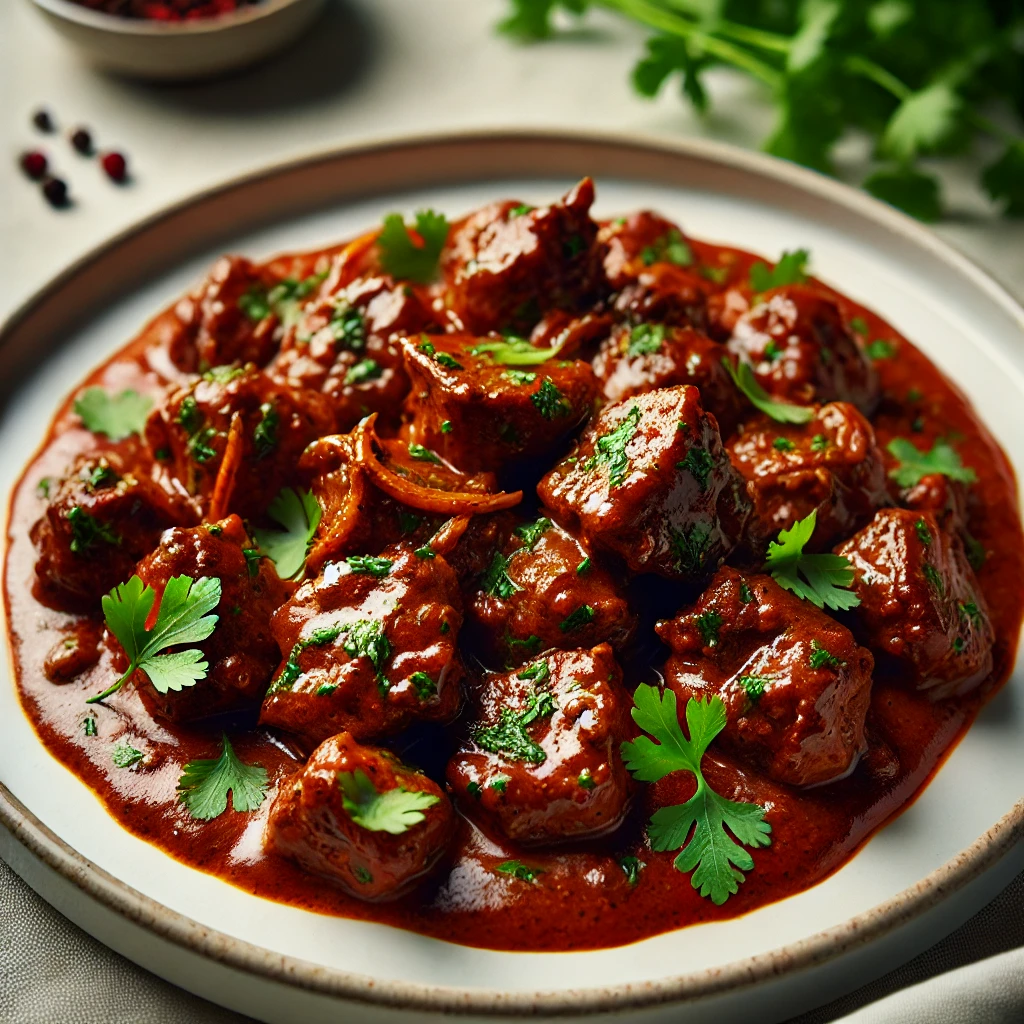
What Spices Are Used in Traditional Lamb Jalfrezi?
One of the reasons Lamb Jalfrezi is so beloved is its bold, aromatic spice blend. At the heart of this recipe is garam masala, a warming mixture that adds depth and balance. To get the most flavor, the spices are often lightly toasted and freshly ground before cooking.
Here’s a breakdown of the traditional spices that go into making an authentic Lamb Jalfrezi:
- Black Pepper (1 g): Adds a sharp, peppery heat that lifts the entire dish.
- Caraway Seeds (2 g): Provide a nutty, slightly bittersweet flavor.
- Carom Seeds (Ajwain) (1 g): Bring a subtle thyme-like taste and aid digestion.
- Green Cardamom (5 g): Sweet, floral notes that balance stronger spices.
- Cilantro Seeds (1 g): Earthy and citrusy, enhancing freshness.
- Cinnamon (4 g): Warm, sweet spice that deepens the curry’s richness.
- Cloves (3 g): Strong, pungent flavor that adds warmth and complexity.
- Coriander Seeds (16 g): Nutty, citrusy backbone of many Indian curries.
- Cumin Seeds (25 g): Smoky, earthy base flavor that anchors the spice mix.
- Fenugreek Seeds (3 g): Slight bitterness that balances rich flavors.
- Garam Masala (4 g): A finishing spice blend that ties everything together with warmth and aroma.
- Garlic Powder (7 g): Adds depth and savory notes.
- Ginger Powder (7 g): Bright, zesty warmth that pairs beautifully with garlic.
- Mango Powder (Amchur) (2 g): Tangy-sour hint for balance and freshness.
- Black Mustard Seeds (2 g): Pungent and nutty, adding a gentle bite.
- Yellow Mustard Seeds (2 g): Slightly milder, complementing the black variety.
- Nigella Seeds (2 g): Smoky and onion-like, adding subtle depth.
- Paprika (5 g): Mild sweetness with a gentle red color.
- Turmeric (8 g): Earthy, golden spice that adds color and health benefits.
Why This Spice Blend Works
The beauty of this combination lies in balance:
- Earthy and nutty spices (cumin, coriander, caraway) ground the dish.
- Sweet and warm spices (cinnamon, cloves, cardamom) add depth.
- Tangy and bitter notes (fenugreek, mango powder, mustard) create complexity.
- Heat and color (black pepper, paprika, turmeric) bring vibrancy.
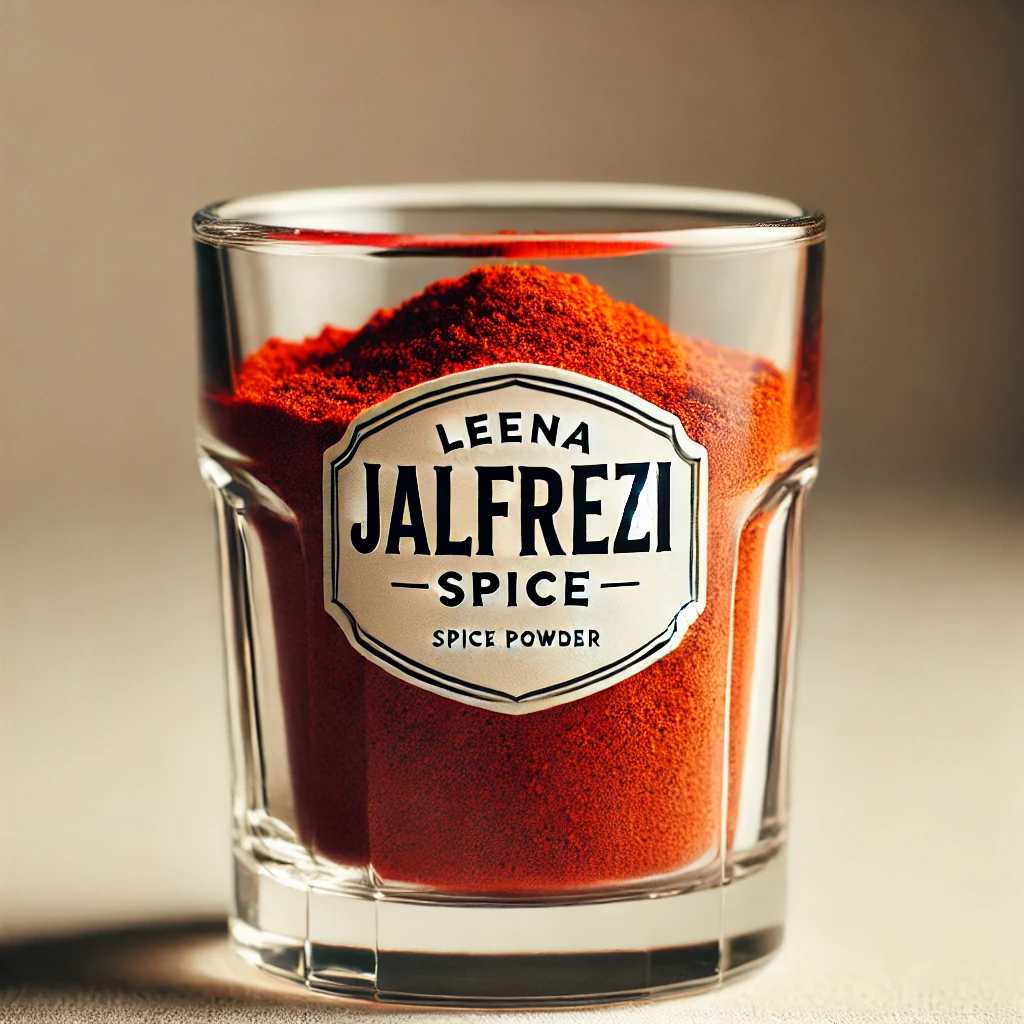
What Is Lamb Jalfrezi and What Makes It Different From Other Curries?
Lamb Jalfrezi is a bold and flavorful curry that stands out in Indian and Indo-British cuisine. At its core, it features tender chunks of lamb stir-fried with onions, bell peppers, tomatoes, and green chilies, all brought together in a thick, spicy, tomato-based sauce. The name “Jalfrezi” comes from the Bengali words jhal (spicy) and frezi (fry), which together mean “hot-fry.” This reflects the dish’s signature cooking style.
Key Characteristics of Lamb Jalfrezi
What makes this curry unique is its method, texture, and flavor profile:
- Cooking Technique: Unlike many curries that are slow-simmered or braised, Jalfrezi uses a quick stir-fry method. The lamb is first browned, then cooked with spices, before the vegetables are flash-fried over high heat. This technique locks in freshness and creates a lively, robust dish.
- Texture: Jalfrezi is not a saucy curry. Instead, it has a semi-dry consistency with just enough thick sauce to coat the meat and vegetables. The chunky peppers, onions, and tomatoes remain slightly crisp, giving the dish a vibrant, almost wok-style feel.
- Heat Profile: Fresh green chilies play a starring role. They provide a sharp, immediate heat that makes Jalfrezi spicier and more punchy than many other curries. The spice is lively and upfront, rather than the slow, lingering burn you might find in curries like Madras.
How It Differs From Other Curries
- Rogan Josh: Slow-cooked, yogurt-based, and rich in aromatic spices, with a smooth sauce. Jalfrezi, in contrast, is drier, fresher, and cooked faster.
- Vindaloo: Intensely hot with a tangy vinegar kick. Jalfrezi’s heat is fresher and more immediate, coming from green chilies rather than vinegar-soaked spices.
- Korma: Mild, creamy, and nutty, often enriched with coconut or cream. Jalfrezi skips creaminess in favor of bold, fiery flavors and crisp vegetables.
The Takeaway
Lamb Jalfrezi is not your typical slow-simmered curry. It’s a spicy, semi-dry stir-fry curry with tender lamb, chunky vegetables, and a distinctive kick from green chilies. Its freshness, speed Perfect 👍 Here’s a clear comparison chart that highlights how Lamb Jalfrezi differs from other popular curries.
Lamb Jalfrezi vs Other Curries
Curry Dish | Cooking Method | Texture | Heat Profile | Key Flavors |
Lamb Jalfrezi | Stir-fried quickly over high heat | Semi-dry, chunky with crisp vegetables | Sharp, fresh heat from green chilies | Tomato-based, vibrant, punchy |
Rogan Josh | Slow-cooked, braised in yogurt and spices | Rich, saucy, smooth | Mild to medium, warming spice | Aromatic, slightly creamy, deep flavors |
Vindaloo | Slow-cooked, marinated with vinegar and spices | Thick gravy, more saucy than Jalfrezi | Very hot, lingering heat | Tangy, fiery, vinegary kick |
Korma | Gently simmered with cream, yogurt, or nuts | Rich, creamy, silky sauce | Mild, very little chili heat | Sweet, nutty, luxurious |
What Does "Jalfrezi" Mean in a Curry Context?
In the world of curries, “jalfrezi” refers to a spicy stir-fry style dish. Unlike slow-simmered curries with lots of gravy, a jalfrezi is cooked quickly over high heat with meat or vegetables, onions, peppers, tomatoes, and plenty of fresh green chilies. The result is a vibrant, semi-dry curry with bold flavor and a lively kick.
The Meaning of the Word
The term jalfrezi comes from Bengali roots:
- Jhal (or Jal): means “spicy” or “hot.”
- Frezi (or Pharezi): loosely means “fry” or “stir-fry.” Some historians also link it to an older Bengali term for “suitable for a diet,” suggesting a lighter, fresher style of cooking.
Together, the word describes exactly what the dish is — a spicy stir-fry curry.
Key Features of a Jalfrezi Curry
- Cooking Technique: Stir-fried quickly over high heat, rather than slow-cooked.
- Texture: Thick, semi-dry sauce with just enough to coat the ingredients.
- Ingredients: Large, colorful pieces of vegetables (like bell peppers, onions, and tomatoes) mixed with tender meat or paneer. Fresh chilies are central to the dish, giving it its signature heat.
What is the origin and history of Lamb Jalfrezi?
Origin and History of Lamb Jalfrezi
The story of Jalfrezi begins in Bengal during the British Raj (late 19th–early 20th century). British colonists living in India were accustomed to large roasts of beef, lamb, or poultry for their meals. Leftovers from these roasts were common, and Indian cooks in colonial households were tasked with repurposing them.To revive cold meat and adapt it to local tastes, Bengali cooks created a quick stir-fry method: frying the meat with fresh chilies, onions, and spices. This became known as “Jalfrezi,” from the Bengali words jhal (spicy/hot) and frezi (to fry). The result was a lively, fiery dish with bold flavors, quite different from slow-simmered curries.Influence of Chinese Techniques
Some food historians suggest that the Jalfrezi style was also influenced by Chinese stir-frying methods that had reached India through trade and migration. This explains the dish’s faster cooking style and emphasis on crisp vegetables, which set it apart from gravy-heavy Indian curries.Early Recipes
Anglo-Indian cookbooks from the colonial period describe Jalfrezi as “cold meat fried with lots of onions and chillies.” Originally, any leftover meat could be used — chicken, beef, or lamb. Over time, lamb became one of the most popular versions, giving rise to the modern Lamb Jalfrezi.From Leftovers to Signature Dish
What began as a thrifty way to reuse leftovers soon evolved into a full-fledged curry. Today, Jalfrezi is rarely made with leftovers; instead, it features freshly marinated meat, vegetables, paneer, or even fish. The quick, high-heat stir-fry method remains the hallmark of the dish.Rise in the United Kingdom
Jalfrezi made its way to Britain with South Asian migration and the growth of curry houses after World War II. Its vibrant heat and semi-dry texture made it an instant hit among British diners looking for something spicier than a korma but less saucy than a vindaloo.By the late 20th century, Chicken and Lamb Jalfrezi had become staples of British Indian Restaurant (BIR) cuisine. In fact, some UK food polls have even ranked Jalfrezi among the nation’s most popular curries.Today’s Lamb Jalfrezi
Modern Lamb Jalfrezi still reflects its origins:- Quick stir-frying rather than long braising.
- Chunky peppers, onions, and tomatoes for freshness and texture.
- Green chilies for a sharp, immediate heat.
- A semi-dry, thick sauce that clings to the lamb rather than drowning it.
What Sides Pair Well with Lamb Jalfrezi?
1. Essential Carbs (Rice & Bread)
These staples soak up the sauce and balance the intensity of the spices.- Naan Bread: Soft, fluffy flatbread, often served plain, with garlic, or butter. Perfect for scooping up the chunky Jalfrezi sauce. Garlic naan adds an extra burst of flavor.
- Plain Basmati Rice: Simple and fragrant, steamed basmati rice allows the curry’s bold flavors to shine.
- Pilau Rice (Pulao): Basmati rice flavored with whole spices like cardamom, cloves, and cinnamon. Adds fragrance and subtle complexity without overpowering the Jalfrezi.
- Roti or Chapati: A lighter, whole-wheat flatbread that’s a healthier, rustic alternative to naan, ideal for mopping up the sauce.
2. Cooling Accompaniments
Since Jalfrezi is a fiery curry, refreshing sides help temper the heat.- Cucumber Raita: Yogurt dip with grated cucumber, mint, and mild spices. Provides instant cooling relief.
- Kachumber Salad: Fresh mix of cucumber, tomatoes, onions, lime juice, and coriander. Adds crunch and brightness.
- Chutneys & Pickles:
- Mango Chutney – adds sweet contrast to balance chili heat.
- Mint Chutney – boosts freshness.
- Lime Pickle – tangy, salty bite that enhances flavor.
- Onion Salad: Sliced onions with lime juice and fresh coriander — simple, sharp, and refreshing.
- Poppadoms: Crisp, crunchy snack to serve on the side for variety in texture.
3. Vegetable & Potato Sides (Dry Curries)
Dry vegetable dishes add texture, nutrition, and variety to the meal.- Bombay Potatoes (Bombay Aloo): Cubed potatoes spiced with turmeric and cumin, lightly fried for a hearty side.
- Saag Aloo: Spinach and potatoes cooked with gentle spices — earthy and mild, balancing Jalfrezi’s intensity.
- Bhindi ki Sabzi (Okra Stir-Fry): Adds a distinct vegetable texture and is a classic North Indian side.
- Tadka Dal: Light lentils tempered with garlic, cumin, and chili. Adds warmth, protein, and a comforting element.
- Roasted or Sautéed Vegetables: Options like asparagus, cauliflower, or carrots bring a lighter, modern twist.
Putting It All Together
For a balanced Lamb Jalfrezi meal:- Start with carbs: Naan or basmati rice as your base.
- Add a cooler: Raita or kachumber salad to tone down the spice.
- Include a vegetable side: Bombay potatoes or bhindi for contrast.
- Finish with condiments: A poppadom and mango chutney for crunch and sweetness.
Related Posts You May Like
How to Cook Lamb Pasanda Curry with Homemade Spice Blend Masala
7 Irresistible Reasons to Add Mumbai Spice Blend to Your Cooking
The Ultimate Guide to Birth Masala 7 Essential Benefits for New Mothers
How to Make Tandoori Masala at Home With 1 Easy Chicken Recipe
14 Proven Turmeric Benefits That Can Improve Your Mood and Energy
How do I make Homemade Birth Masala? 1 Easy Step
10 Flavor-Packed Tips of Using Butter Chicken Spice Blend at Home
Which Cut of Lamb Is Best for Making Jalfrezi Curry?
The choice of lamb cut is important for Jalfrezi because the dish balances quick stir-frying with a simmered sauce. You want meat that becomes tender, absorbs spices, and doesn’t dry out.
Best Cuts for Lamb Jalfrezi
- Lamb Shoulder (Boneless or Diced)
- Why it works: Lamb shoulder has the perfect mix of fat and connective tissue, which breaks down during cooking to create juicy, flavorful meat.
- Best use: Ideal for slow-simmered Jalfrezi versions, where the sauce cooks for 1.5–2 hours before the vegetables are added.
- Lamb Neck Fillet (or Neck Chops)
- Why it works: An economical but flavorful cut, rich in connective tissue. When cooked gently, it becomes meltingly tender and deeply absorbs the spices.
- Best use: Great for both medium-length simmered curries and traditional-style Jalfrezi where tenderness is key.
- Diced Lamb Leg
- Why it works: A leaner option that’s still tender when cooked correctly. It works especially well if you’re preparing a quicker Jalfrezi that doesn’t require long simmering.
- Best use: Perfect if you prefer a less fatty curry, but it must be carefully monitored to avoid drying out.
Quick Summary
Cut of Lamb | Best Feature | Best Use in Jalfrezi |
Shoulder | Juicy, well-marbled, very tender | Slow-simmered or braised Jalfrezi |
Neck Fillet | Flavorful, economical, tender | Medium/slow-cooked Jalfrezi |
Diced Leg | Lean, cooks faster | Quick stir-fry style Jalfrezi |

How Long Does It Take to Cook Lamb Jalfrezi to Make the Meat Tender?
The cooking time for Lamb Jalfrezi depends on the cut of lamb you’re using and the method of cooking. Because lamb shoulder and leg are common choices, they need enough time for the connective tissue to break down, which is what makes the meat tender and juicy.
Cooking Methods and Times
Method | Time | Notes |
Stovetop Simmer | 1.5–2 hours (covered, low heat) | Start checking around 90 minutes. Add water as needed to keep the sauce from drying out. |
Oven (Low & Slow) | 1.5–2.5 hours at 150 °C (300 °F) | Ensures tender, melt-in-the-mouth meat. Check at 90 minutes, extend if necessary. |
Slow Cooker (Low) | 6–8 hours | Perfect for lamb shoulder. Long, gentle cooking makes the meat fall apart. |
Slow Cooker (High) | 3–4 hours | Faster, but less tender than cooking on low. |
Pressure Cooker / Instant Pot | 30–40 minutes on high pressure | Quickest method. Allow 10 minutes of natural pressure release before opening. |
Quick Stovetop Version | 25–45 minutes | Works with leaner cuts (like diced leg). Sear for 5–7 minutes, then simmer 20–25 minutes. For shoulder, extend to 40–45 minutes. |
Key to Tender Lamb
- Low and slow wins: The longer and gentler the cooking, the more the collagen in the lamb breaks down, creating that signature “fall-apart” texture.
- Check early: Always test with a fork at the shorter end of the cooking time. If the meat is not yet tender, continue cooking and check every 15 minutes.
- Best cuts for tenderness: Lamb shoulder or leg (cubed) are the most reliable options for a tender curry.
Can I substitute mutton for lamb in jalfrezi if it's cheaper from local farms?
1. Adjust the Cooking Time
Mutton comes from older sheep or goats, so it’s tougher and contains more connective tissue than lamb. To achieve tender meat:- Stovetop: Simmer gently for 5–3 hours, depending on the cut and age of the meat.
- Pressure Cooker: Cook for 20–40 minutes on high pressure (5–9 whistles), then release naturally before finishing the Jalfrezi.
- Oven (Slow & Low): 2–3 hours at ~150 °C (300 °F) works well for larger cuts.
2. Marination (Optional but Recommended)
Marinating mutton overnight helps tenderize it and infuse flavor:- Yogurt (curd): Natural enzymes break down proteins for softness.
- Ginger-garlic paste: Adds flavor and aids tenderization.
- Papaya paste (optional): Contains natural tenderizing enzymes.
3. Cooking Method for Jalfrezi
Because Jalfrezi is traditionally a quick stir-fry, you’ll need to adapt the method for mutton:- Sear the Meat: Brown the marinated mutton in oil with spices to lock in flavor.
- Tenderize: Simmer the mutton in the tomato-spice base until nearly tender.
- Finish with Vegetables: Add bell peppers, onions, and fresh chilies toward the end. Cook for 5–10 minutes, keeping the vegetables slightly crisp — this maintains the signature Jalfrezi texture.
4. Flavor Profile Differences
- Lamb: Mild, tender, and slightly sweet flavor.
- Mutton: Deeper, gamier, and more robust.
Lamb vs. Mutton for Jalfrezi
Feature | Lamb | Mutton | Notes / Tips |
Flavor | Mild, slightly sweet | Deep, robust, gamy | Mutton’s bold flavor stands up well to spicy Jalfrezi spices |
Tenderness | Naturally tender, cooks relatively quickly | Tougher, requires longer cooking | Best to slow-cook or pressure cook mutton |
Best Cuts | Shoulder, leg (boneless or diced) | Shoulder, leg, neck (bone-in optional) | Choose cuts with connective tissue for tenderness |
Cooking Time (Stovetop) | 25–45 min (lean cuts), 1.5–2 h (shoulder) | 1.5–3 h | Check tenderness with a fork |
Cooking Time (Pressure Cooker) | 20–30 min | 20–40 min | Use natural pressure release for best results |
Marination | Optional, enhances flavor | Recommended (yogurt, ginger-garlic, or papaya paste) | Helps tenderize tougher mutton |
Vegetable Finish | Add peppers and onions last 5–10 min | Same method, after meat is tender | Keeps vegetables crisp and maintains Jalfrezi texture |
Heat Compatibility | Absorbs spices easily | Handles robust, spicy curry very well | Both work with fresh chilies, garam masala, and tomato base |
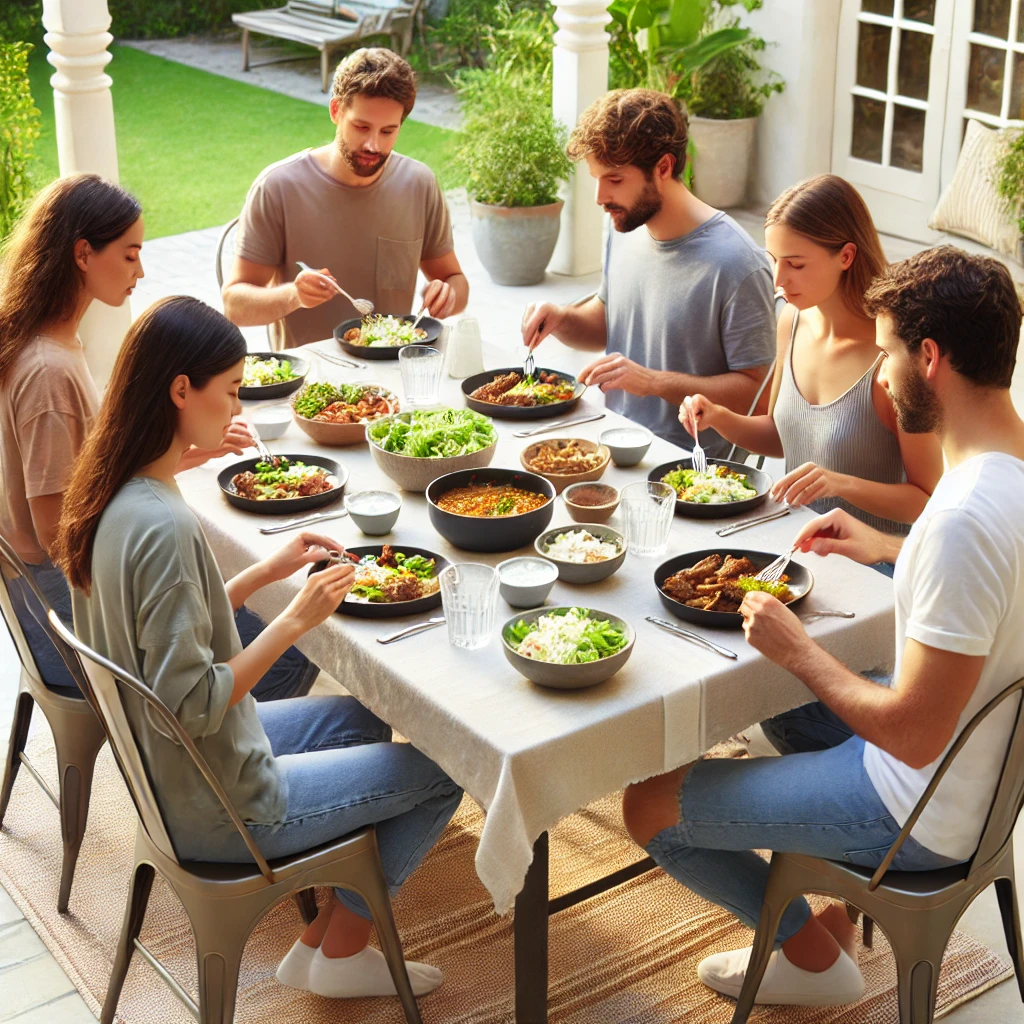
How do I make lamb jalfrezi using leftover roast lamb from a BBQ?
Ingredients (Serves 3–4)
- Leftover Lamb: 300–400g, trimmed of excess fat, cut into bite-sized strips or cubes
- Vegetables & Aromatics:
- 2 onions, sliced or cut into chunks
- 1 red bell pepper, cut into strips or chunks
- 1 green bell pepper, cut into strips or chunks
- 1–3 green chilies, slit lengthwise (adjust to taste)
- 1-inch piece of ginger, grated
- 2–3 garlic cloves, minced
- Spices:
- 1 tsp cumin seeds
- 1 tsp ground coriander
- 1 tsp ground cumin
- 1/2 tsp turmeric
- 1/2–1 tsp chili powder (adjust for heat)
- 1 tsp garam masala
- Sauce:
- 1 tbsp tomato puree
- 1 medium tomato, chopped (or 1/2 cup canned tomatoes)
- 1/2 cup water or stock
- Salt and black pepper, to taste
- Garnish: Fresh coriander (cilantro), chopped
- 2 tbsp oil (vegetable or ghee)
Method
- Prepare the Lamb: Cut the leftover BBQ lamb into even, bite-sized pieces. Smaller pieces allow the curry flavors to penetrate without overcooking.
- Sauté Aromatics & Spices:
- Heat oil in a wok or large pan over medium-high heat.
- Add cumin seeds and let them sizzle for a few seconds.
- Add onions and cook 4–5 minutes until translucent.
- Stir in ginger, garlic, and green chilies, cooking for another 1–2 minutes until fragrant.
- Add Peppers, Tomatoes & Spices:
- Toss in the bell peppers and tomato puree; stir-fry 3–5 minutes until peppers are slightly crisp.
- Add chopped fresh or canned tomatoes; cook until they start to break down.
- Sprinkle in turmeric, ground cumin, coriander, chili powder, and salt. Stir well to combine.
- Add the Lamb:
- Gently fold in the pre-cooked lamb and add water or stock.
- Reduce heat to medium, cover, and simmer 5–10 minutes to heat the lamb and allow the flavors to meld.
- Stir in garam masala at the end for aroma and taste.
- Serve:
- Garnish generously with fresh coriander.
- Serve hot with basmati rice, pilau, or naan.
Tips for Using BBQ Lamb
- Keep the Smoke: The smoky BBQ flavor enhances the curry — no need to mask it.
- Trim Excess Fat: Remove hardened fat from the roast before cutting to prevent greasy curry.
- Short Simmer: Only 5–10 minutes is needed for pre-cooked lamb; over-simmering will dry it out.
- Adjust Heat: Increase or reduce fresh chilies and chili powder to control spiciness.
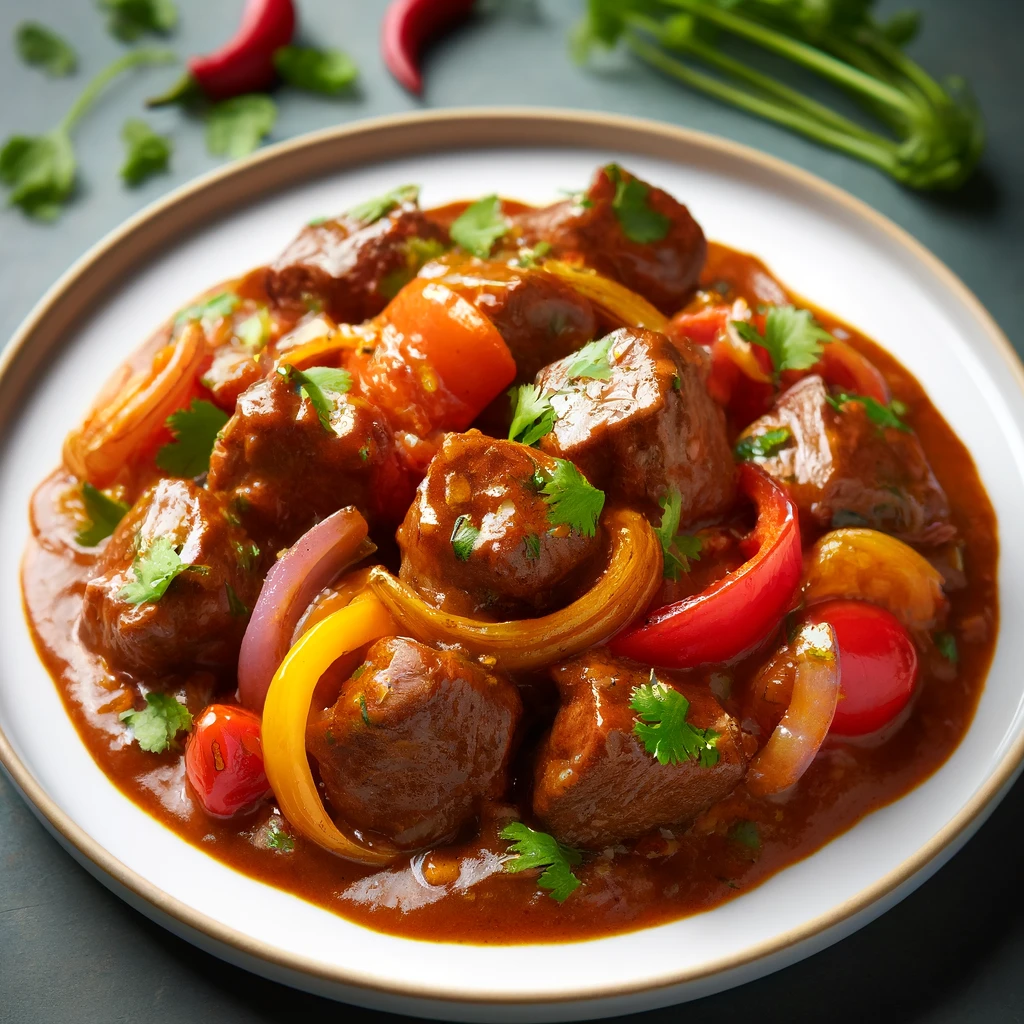
Frequently Asked Questions: Lamb Jalfrezi
Can I make Lamb Jalfrezi spicy or mild?
Absolutely! Adjust the heat by using more or fewer fresh green chilies and chili powder. For a milder version, remove the seeds from chilies and reduce chili powder.
Can I use frozen lamb or leftovers from the fridge?
Yes! Frozen lamb should be thawed completely before cooking. Leftover cooked lamb works perfectly — just add it at the end to heat through, keeping it tender.
Which vegetables work best in Jalfrezi?
Bell peppers, onions, and tomatoes are classic, but you can experiment with carrots, zucchini, or even snap peas. Keep them slightly crisp to maintain the signature texture.
Can I prepare Jalfrezi ahead of time?
You can prep the spice mix, chop vegetables, and even marinate the lamb in advance. However, cook the lamb and vegetables just before serving to preserve texture and flavor.
Is Jalfrezi a healthy curry option?
Compared to creamy curries, yes! It uses minimal oil, lots of fresh vegetables, and lean cuts of lamb. Pairing it with raita and steamed rice adds balance.
Can I make it vegetarian or vegan?
Definitely! Swap lamb with paneer, tofu, chickpeas, or mixed vegetables. Follow the same stir-fry technique for that classic Jalfrezi taste.
Why does my Jalfrezi sometimes turn watery?
Overcooking or adding too much liquid early can thin the sauce. Cook lamb first, then add vegetables and minimal water or stock, simmering until it reaches a thick, semi-dry consistency.
How do I store leftovers?
Keep in an airtight container in the fridge for 2–3 days. Reheat gently on the stovetop to prevent the meat from drying out.
What’s the secret to the perfect Jalfrezi flavor?
Quick stir-frying over high heat, fresh vegetables with slight crunch, and finishing with garam masala and fresh coriander for aroma.
Conclusion
Lamb Jalfrezi is a celebration of bold flavors, vibrant colors, and simple cooking techniques that bring out the best in tender lamb and fresh vegetables. Whether you’re using fresh cuts or repurposing leftover BBQ lamb, this dish offers a perfect balance of heat, spice, and texture that’s sure to impress at any meal. Pair it with steaming basmati rice or warm naan, and you’ve got a wholesome, satisfying meal that’s as easy to make as it is delicious. With its rich history, adaptable ingredients, and unmistakable stir-fry style, Lamb Jalfrezi remains a timeless favorite in kitchens around the world.
